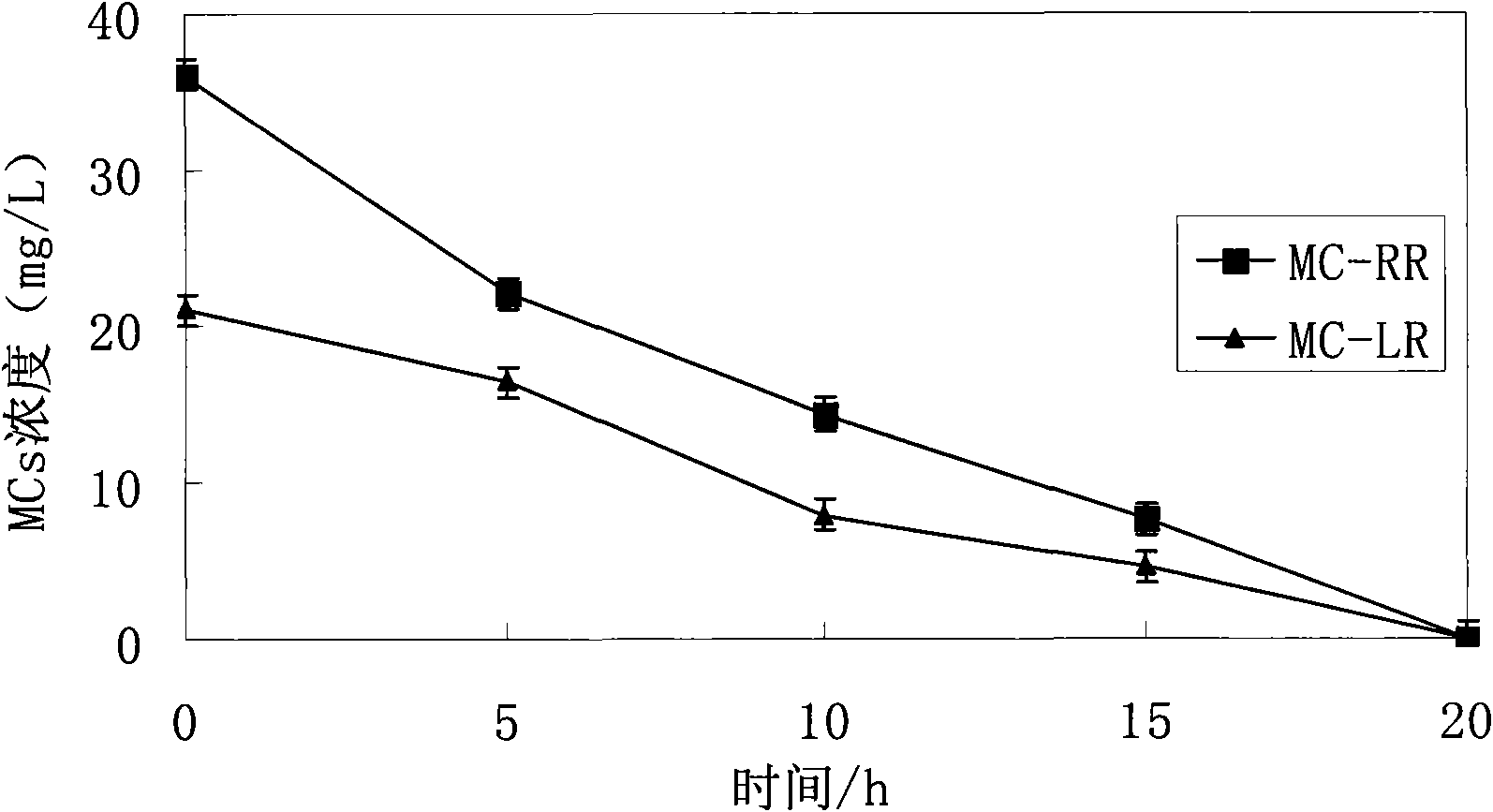Method for biodegradation of microcystins by using microorganisms
A technology of microcystin and biodegradation, applied in chemical instruments and methods, biological water/sewage treatment, bacteria, etc., can solve the problem that MCs are difficult to remove, and achieve the effect of easy cultivation
- Summary
- Abstract
- Description
- Claims
- Application Information
AI Technical Summary
Problems solved by technology
Method used
Image
Examples
Embodiment Construction
[0020] 1. First prepare the growth medium of Sphingomonas USTB-05, which consists of (per liter): MgSO 7H 2 O 1.0g, KH 2 PO 4 0.5g, K 2 HPO 4 4.0g, NaCl 1.0g, CaCl 2 20mg, FeSO 4 5mg, ZnCl 2 5 mg, MnCl 2 4H 2 O 5mg, CuCl 2 0.5 mg, on this basis, 15.0 g of glucose and 1.5 g of yeast extract powder were added as carbon and nitrogen sources for the growth of Sphingomonas USTB-05. Add 100 milliliters of the prepared liquid medium into a 500 milliliter conical flask, sterilize at high temperature and pressure (121° C.) for 20 minutes, and then sterilize for another 20 minutes under ultraviolet irradiation in a clean bench.
[0021] 2. Under sterile conditions in a clean bench, inoculate 1 ml of Sphingomonas USTB-05 bacteria solution into the liquid culture medium of the Erlenmeyer flask, and conduct batches at a temperature of 30°C and a shaker speed of 200 rpm. After culturing for 3 days, harvest the Sphingomonas USTB-05 cells by pouring off the supernatant after ce...
PUM
 Login to View More
Login to View More Abstract
Description
Claims
Application Information
 Login to View More
Login to View More - R&D
- Intellectual Property
- Life Sciences
- Materials
- Tech Scout
- Unparalleled Data Quality
- Higher Quality Content
- 60% Fewer Hallucinations
Browse by: Latest US Patents, China's latest patents, Technical Efficacy Thesaurus, Application Domain, Technology Topic, Popular Technical Reports.
© 2025 PatSnap. All rights reserved.Legal|Privacy policy|Modern Slavery Act Transparency Statement|Sitemap|About US| Contact US: help@patsnap.com



